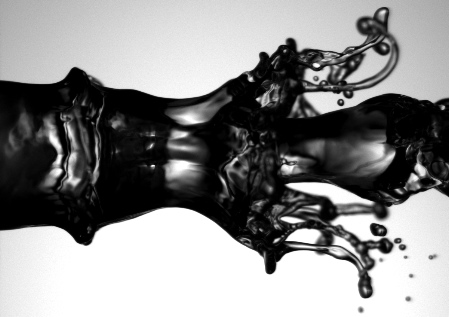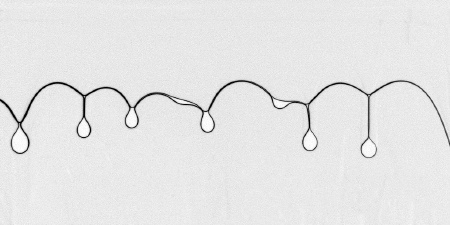Research Topics
The fragmentation of compact macroscopic objects is a typical phenomenon bridging complicated microscopic phenomena, such as breakup in liquid atomization, with non trivial, and often broad statistics, namely that of the fragment sizes. As for liquid atomization, drops come from the rupture of objects having the form of threads or ligaments; the smooth, uniform long liquid cylinder has thus very soon become the paradigm of droplet formation. Following the early observation Mariotte (1686) and Savart (1833) reporting that a liquid jet eventually ends in a train of droplets, subsequent studies have explained why the basic smooth state is unstable (Plateau 1873), how fast the instability develops (Rayleigh 1878) and how the thread finally disrupts into disjoined parcels (Eggers 1997) and this, even in the presence of brownian noise (Moseler and Landman 2000, Eggers 2002).
Yet, a phenomenon contingent to the formation of either natural or man-made sprays is the broad distribution of the drops sizes. Little is known in details about the reasons of this broad statistics although Villermaux et al. (2004) and Marmottant and Villermaux (2004a,b) have suggested, and provided some experimental evidence, that a coalescence-like effect within the ligaments themselves while they break is responsible for the size polydispersity of the resulting spray.
Gallery
 |
| Atomization of a liquid jet. |
| A sheet is formed from the impact of two jets at an angle. The sheet rim gives birth to liquid ligaments which stretch and break to form dispersed drops. |
| "Pokrovski's experiment". A tube filled with a wetting liquid falls axially under its own weight. In its gravity-free reference frame, the interface is only subjected to surface stresses and rapidly evolves into an hemispherical equilibrium shape. On impact of the tube on a rigid floor, the interface curvature reverses violently thanks to a purely inertial mechanism (Antkowiak et al., J. Fluid Mech., 2007). The interface then forms a digitation and ultimately an intense and concentrated stretched liquid jet. Such a jet shares analogous properties with jets developing in the context of bubbles bursting at a liquid surface, cavitation bubbles, collapsing cavities following an impact, shaped charges, gravity waves impacting a dam or high amplitude Faraday waves to quote a few examples among many. |
| Fragmentation of a stretched liquid ligament. A capillary bridge is violently stretched so as to form a liquid ligament of variable cross-section. Immediately after the ligament pinches off, one can observe the propagation of unstable capillary wavepackets from the edges. These unstable waves ultimately lead the ligament to disrupt into a distribution of droplets of different sizes. This experiment is intended to mimic the formation of stretched ligaments observed in atomization experiments (see above). We currently investigate the properties of wave propagation in such an inhomegeneous medium, and more generally the connection between these wave dynamics and the observed droplets' polydispersity. |
 |
| A trickle instability: a thin band of fluid is squeezed in a Hele-shaw cell and falls by its own weight. An original capillary instability is responsible for its thickness modulations, and ultimate fragmentation. The distance between two drops depends both on the capillary lengthscale, and initial band thickness. |

